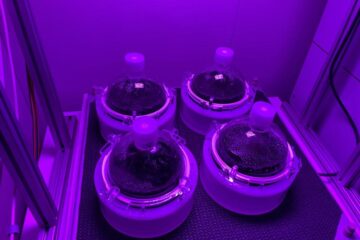CALMponin – Novel markers for the diagnosis and prognosis of breast cancer

The invention is based on the finding that the proteins Calmodulin-like protein 5 (CALML5) and Calponin-h2 (CNN2) are upregulated in the nuclear matrix of human breast cancer tissue whereas both are absent in healthy human breast tissue and benign controls. Thus, the two proteins may serve as novel markers for breast cancer.
Comparing blood levels of patients with breast cancer, patients with benign breast diseases and age-matched healthy controls the use of CNN2 in human blood demonstrated to be a highly specific and sensitive biomarker for the early detection of human breast cancer in women of all ages. As CALML5 can also be found in human blood, a blood based assay identifying breast cancer patients by analysing the level of CALML5 is currently explored. Furthermore, this method may be used for the determination of a patient`s prognosis and of a therapy efficacy within the scope of personalized medicine.
Weitere Informationen: PDF
PROvendis GmbH
Tel.: +49 (0)208/94105 10
Ansprechpartner
Dipl.-Ing. Alfred Schillert
Media Contact
Alle Nachrichten aus der Kategorie: Technologieangebote
Neueste Beiträge

Das massereichste stellare schwarze Loch unserer Galaxie entdeckt
Astronominnen und Astronomen haben das massereichste stellare schwarze Loch identifiziert, das bisher in der Milchstraßengalaxie entdeckt wurde. Entdeckt wurde das schwarze Loch in den Daten der Gaia-Mission der Europäischen Weltraumorganisation,…

Neues Schweißverfahren für Windräder
… ermöglicht beschleunigte Produktion. Die Bundesanstalt für Materialforschung und -prüfung (BAM) stellt auf der diesjährigen Hannover Messe ein innovatives Schweißverfahren für Windräder vor, mit dem sich die Produktionsgeschwindigkeit von Windgiganten…

Wie Blaualgen Mikroorganismen manipulieren
Forschungsteam an der Universität Freiburg entdeckt ein bisher unbekanntes Gen, das indirekt die Photosynthese fördert. Cyanobakterien werden auch Blaualgen genannt und gelten als „Pflanzen des Ozeans“, weil sie in gigantischen…

















